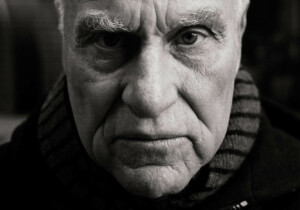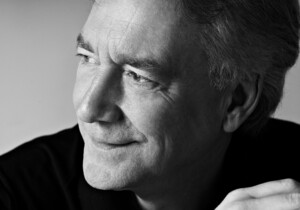Fred Koetter died August 21 in Boston, Massachusetts, after a long period of illness. Fred’s influence was widespread as the co-author of Collage City with Colin Rowe, as an award-winning architect and urbanist, as an educator for over six decades at Cornell and Harvard, and as the dean of the School of Architecture at Yale University from 1994 to 1998, where he spent over 20 years as a member of the faculty until his retirement in 2013.
Fred’s intellectual trajectory moved from a rigorous formal approach cultivated as a graduate student at Cornell to the professional demands of turning those formal tropes into real places—sites for institutions, sensitive background buildings, and urban districts. His encyclopedic knowledge rivaled that of his mentor Rowe. Unlike Rowe’s elliptical peregrinations, Fred’s comments were more terse but equally complex and layered. His projective vision and dry sense of humor made his insights uniquely surprising and always to the point. His most common critique, “Isn’t that just great,” could mean several different things depending on vocal inflection. He could equally wield a single word or add a building to a site so deftly that you would realize only much later that the comment or the architecture had completely changed the situation in which it was cast. As he said to me during a pilgrimage to see Piero della Francesca’s frescoes in Arezzo, Italy: “Look at that guy…no expression as he pierces that other guy with a spear. You really need to know what you’re doing to pull that off.”
Fred had the ability to see large forces at work and to distill them into precise, concentrated, and memorable architectural solutions. Born and raised in Montana, Fred’s vision of the city remained an apparition of promise—a dynamic ensemble of peoples, histories, and unpredictable forces, which never failed to fascinate. The office and the studio culture he nourished were similarly dynamic—rambling improvisations, Popperian dialogues, that commenced between the two of us but were gradually ceded to the students as they groped their way through complex urban problems, found their own voices, reaching a broad audience of critics, professionals, and civic leaders. As Fred memorably put it to a class late one night in the streets of Helsinki: in architecture, “you have to walk your pet goldfish even when you are underwater.”
When I started teaching with him 20 years ago, his work with his partner Susie Kim was expanding into larger urban projects. The globalization of the world’s economy presaged architecture’s constructive possibilities and its destabilizing effects on historic cities, ecosystems, and cultures. The more conventional notion of “place” ceased to suffice, as he and Susie chased camels across the deserts outside Cairo, saw their City Hall outside Tianjin, China, sold off to a multinational corporation at the ribbon-cutting ceremony, and were asked to fully realize cities and complexes six months from the start of a handshake contract. Koetter Kim & Associates were early pioneers in the ecological development of large sites, and remained curious about the marriage between local cultures and global aspirational changes. Sometimes on his weekly circumnavigation of the globe, after stopping by his offices in London and Boston, Fred would appear at the Yale studios looking worn. But one glimpse at the work on an eager student’s desk, and he would pump full of life, sustained by the promise of young talent, a good conversation, and the prospect of drinks and debate at the nearby Irish bar where the best ideas would be fully fleshed out.
Fred and Susie demonstrated sophistication and generosity in their inclusiveness and invention. They created the operatic atmosphere of the cities they designed in their home in Brookline. As a frequent guest, I came to expect a parade of writers, architects, artists, doctors, family members, and other strays walking into the living room, or engaging me in an impromptu conversation on the way to the shower. Fred’s mind was like a city, and he encouraged and orchestrated chaos, of which he was the eye of the storm of opinions and talent.
In the classroom, Fred always advocated for the most challenging student concepts, often leaving me to figure out how these could possibly be resolved. His former partner told me that Fred would come chuckling into the office the following day. Fred was a trickster. He was deliberately trying to see if I could figure out the solution more than advocating that particular path himself. He always pushed his students and colleagues toward these greater challenges, encouraging us to step beyond our imaginations’ limits.
Fred gently challenged colleagues and students to think things anew. One particular criticism he made in a final review comes to mind. While the circus of critics had spent the day acrobatically twisting and turning their rhetoric, Fred made one and only one final comment on the student’s proposal for a train station complex. He related how the designs of the 19th-century English train stations, nodes in a global system that connected numerous peoples and cultures from eastern China to London, “were not designed to show where you were, but where you were going.”










